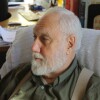Game Theory Tackles Rising Health Care Costs

Game Theory Tackles Rising Health Care Costs lead image
U.S. Army Corps of Engineers Savannah District via Flickr
(Inside Science) -- A new army is marching into the war against rising health care costs: engineer-mathematicians.
These individuals occupy a field called operations research, also known as advanced analytics. A subset is game theory, a way of modeling complex human behaviors and decision-making to produce the best outcomes. Applied to health care, the work includes scheduling operating rooms, setting fees, training technicians and deciding where to build hospitals.
The field has grown enormously in the last 20 years, according to Michael Carter , a professor of industrial and mechanical engineering at the University of Toronto, and one of the leading theorists. (University engineering schools are one of the likeliest places to find operations research programs.)
“It’s being used in so many areas and so many applications,” said Carter.
Much of the work is simulation and some of it looks like complex computer games.
Operations research goes back to the eccentric 19th century British engineer Charles Babbage who besides building the first mechanical programmable computer (the “Difference Engine”), also worked out the mathematics that essentially created the modern version of Britain’s postal service and the first accurate actuary tables.
In World War II, the Allies used operations research as a weapon of war.
American physicist William Shockley, who would later co-invent the transistor, may have saved thousands of lives by advising Allied Atlantic convoys to seek cloud cover. By analyzing data from all German bomber attacks on convoys he was able to prove that the bombers did not use radar and were therefore less effective in cloudy weather.
General Electric Co. now is using a similar technique in India in efforts to help solve that country’s massive health problems.
Called Corvix, after one of the moons in Star Trek’s Klingon Empire, GE took publicly available health and population data from the Public Health Foundation of India for the state of Andrha Pradesh in southern India, and then installed powerful analytical techniques in the back end with a game-like operating system. Think of Sim City on steroids.
“You are actually feeding off real-life data, and you are making projections in the future,” said Mitch Higashi, chief economist for GE Healthcare. “Changing any one factor alters the simulation. If you put a hospital in a certain place and configure it in a certain way with a certain number of beds, how much imaging equipment would you need?”
GE is not getting into the hospital-siting business just yet. Higashi said the aim of the current pilot program is to determine how many health professionals the government has to train to provide new hospitals with the imaging technologists, pharmacists, and laboratory technicians.
So far, Corvix predicted they would need ten times as many imaging technicians to staff the equipment the government is planning to buy, he said. GE, of course, sells the equipment.
In other situations, game theory provides a tool.
Game theory is probably best known from the work of John Forbes Nash Jr., depicted in the film “A Beautiful Mind.” It tries to predict the best way for people to act when faced with complex decisions and how to reach a result the philosopher Jeremy Bentham described as “the greatest good for the greatest number,” and researchers call the Nash Equilibrium.
Game theory can help a group find the best strategy for itself, in both competitive and collaborative settings.
This would apply in health care, Higashi said. Take three organizations, each wanting to build a hospital, but each having a different a different site they think will maximize profits. Unless they work together, they are likely to get into an expensive turf war.
“You can drag and drop a virtual hospital right on top of a map and then activate the big data in the cloud to start running a forecast,” Higashi said.
All this can apply to the mundane as well. Carter is working on operating room schedules.
“The docs are paid fees for services so they want to operate as much as possible,” he said. “The hospital is operating on a tight budget, and they want as little as possible. And the nurses all want to go home at 5 o’clock.” The trick is balancing all those into an equilibrium.
Researchers at Penn State, in University Park, are working on applying game theory to pricing, trying to get the hospitals, doctors, and insurance companies to cooperate to keep prices from rising. If they all cooperate they can come to the greater good; if they don’t prices will rise.
Carter said that 20 years ago no one is paying attention to these tools.
With health care now absorbing 14.6 percent of the U.S. gross national product, Carter and others think serious math may provide an answer.


